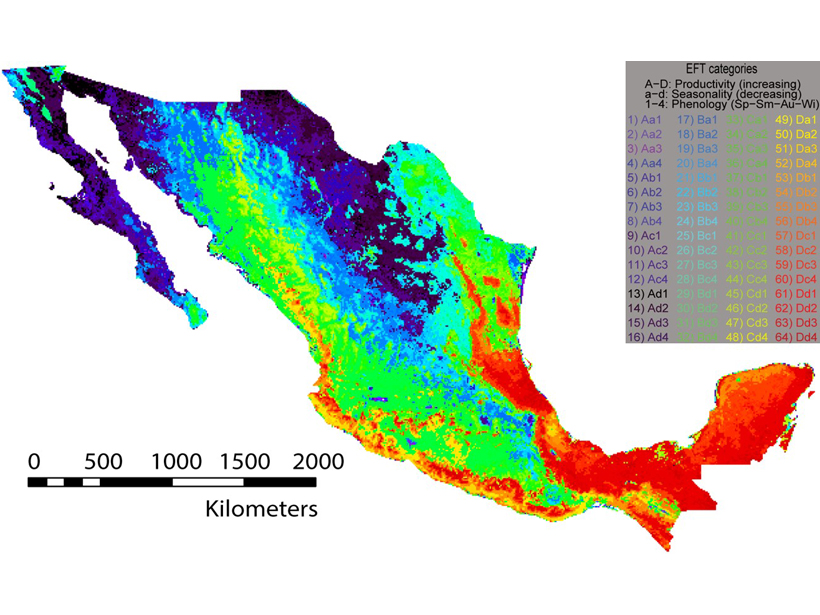Source: Journal of Geophysical Research: Biogeosciences
Understanding how Earth systems are responding to change across space and time requires distributed measurement samples, a buffet in a smorgasbord, so to speak. Many of these measurements arise organically, as individual research projects identify priorities and syntheses form, while some are more centralized efforts. In either case, these Environmental Observatory Networks (EONs) can only sample a subset of the diversity of ecosystems, soils, watersheds, and species that span any network.
Villarreal et al. [2019] develop one method to evaluate how representative the “buffet” represented by the EON sampling sites represents the true variety, using the megadiverse country of Mexico as a case study. The authors show that an optimal sampling strategy would require a more than 80 sites to represent a majority of the dynamics of carbon and water cycling, which the current network undersamples. The innovativeness of the approach is the focus on using public datasets and easy to adapt methods, critical for use in regions with limited resources.
The paper also introduces the growing EONs in Mexico, the results of which are featured in a number of papers that, like this one, are part of a special issue on MexFlux: advances in ecosystem carbon and water fluxes across Mexico in JGR: Biogeosciences.
Citation: Villarreal, S., Guevara, M., Alcaraz‐Segura, D., & Vargas, R. [2019]. Optimizing an environmental observatory network design using publicly available data. Journal of Geophysical Research: Biogeosciences, 124. https://doi.org/10.1029/2018JG004714
—Ankur Rashmikant Desai, Editor, JGR: Biogeosciences
Text © 2019. The authors. CC BY-NC-ND 3.0
Except where otherwise noted, images are subject to copyright. Any reuse without express permission from the copyright owner is prohibited.

